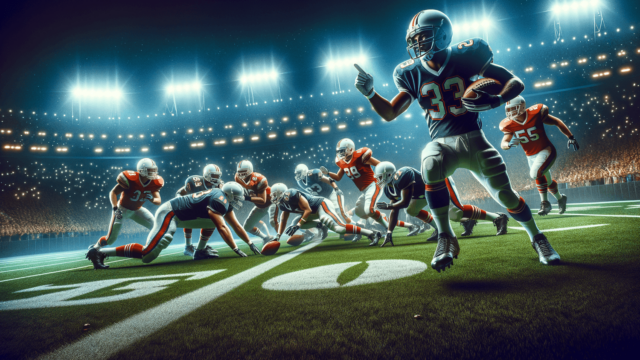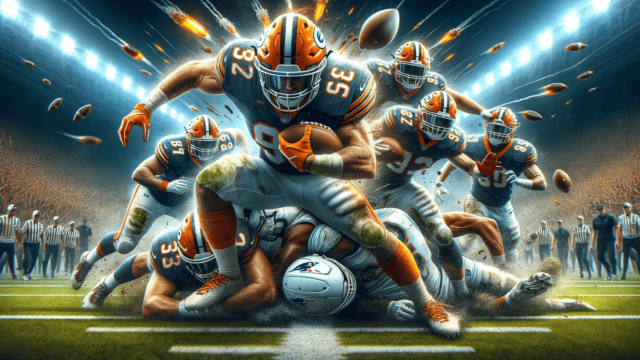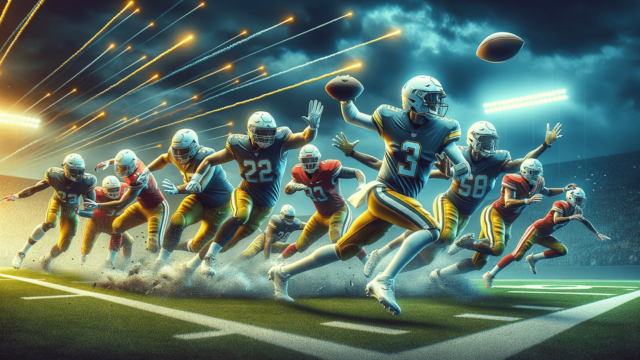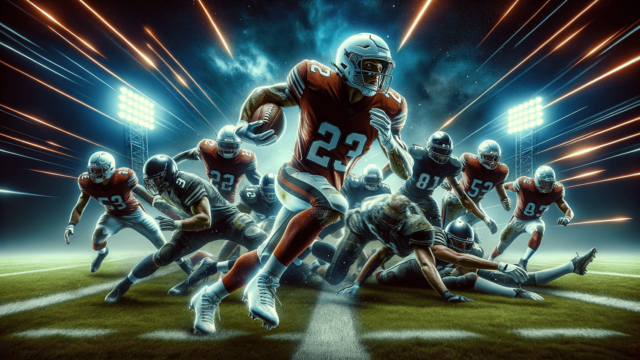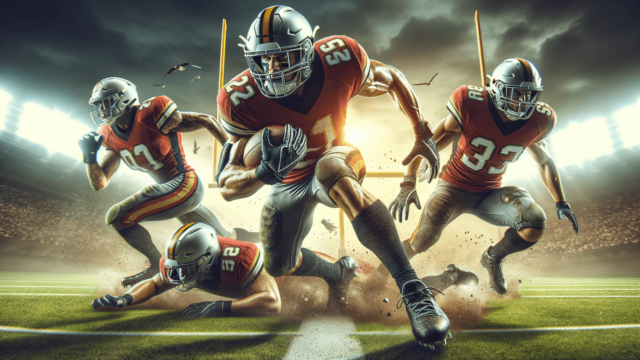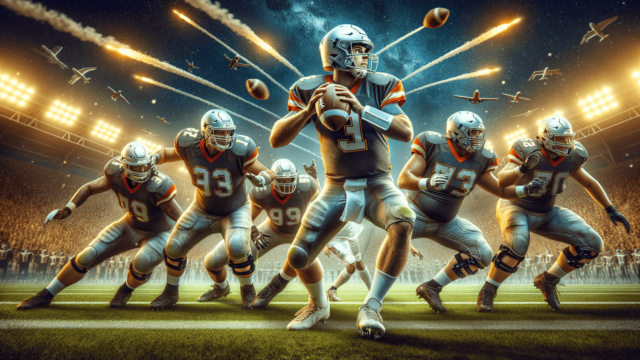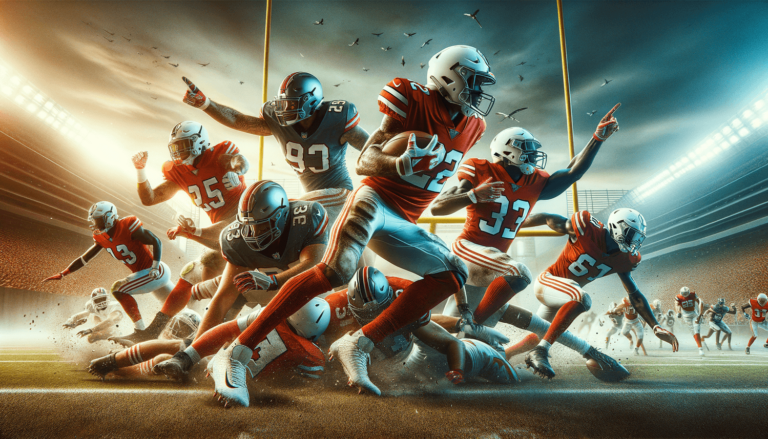
The Red Zone in football refers to the area of the field within an opponent’s 20-yard line. It is a critical zone for both offenses and defenses, as scoring becomes more likely due to the shorter distance to the end zone. Teams often develop specific strategies and plays to increase their scoring opportunities or prevent their opponents from scoring in this area.
Understanding the Red Zone in Football
The Red Zone in football refers to the area of the field within an opponent’s 20-yard line. It is a critical zone for both offenses and defenses, as scoring becomes more likely due to the shorter distance to the end zone. Teams often develop specific strategies and plays to increase their scoring opportunities or prevent their opponents from scoring in this area.
Importance of the Red Zone
The Red Zone carries significant importance because it determines the likelihood of a team scoring a touchdown or a field goal. Scoring in the Red Zone is crucial for a team’s success, as it directly contributes to the overall points on the scoreboard. A strong Red Zone performance may often be the deciding factor in close matches.
Offensive Strategies in the Red Zone
Offensive teams use a variety of tactics in the Red Zone to maximize their scoring potential. Formation diversification, running and passing plays, as well as exploiting mismatches in the defense are common strategies. One common approach is the use of short, quick passes that are difficult for defenders to cover.
Defensive Strategies in the Red Zone
Defensive teams, on the other hand, focus on preventing the offense from scoring a touchdown. They often use different defensive alignments, such as compact formations or zone coverage schemes, to limit the offense’s options. Pressure on the quarterback, tight coverage of receivers, and strong run defense are essential components of a successful Red Zone defense.
Measuring Red Zone Efficiency
An important metric to evaluate a team’s success in the Red Zone is Red Zone Efficiency. It’s calculated by dividing the number of touchdowns or field goals scored by the total number of Red Zone opportunities. A higher percentage indicates the team is more successful in their Red Zone attempts, while a lower percentage indicates a need for improvement.
Key Players in the Red Zone
Several key players on both sides of the ball play crucial roles in Red Zone performance. A capable quarterback who can make quick decisions and accurate throws is essential for a successful offensive Red Zone strategy. Running backs and wide receivers with strong ball control and agility also contribute to effective Red Zone plays.
On the defensive side, linebackers and defensive backs need to be able to quickly read and react to offensive plays. A strong pass rush from the defensive line can disrupt the passing game and create sacks or forced errors by the quarterback. Overall, having versatile, athletic players contributes to stout Red Zone defense and limits opponents’ scoring opportunities.
Tactics to Improve Red Zone Performance
Teams looking to improve their Red Zone efficiency can apply specific tactics and practice drills targeting this area. Some of these tactics include:
1. Focusing on Execution
Often, Red Zone performance can be improved by refining technique and execution during practice. Concentrating on fundamentals, such as precise route running and ball security, enhances a team’s ability to score when inside the 20-yard line.
2. Utilizing Pre-snap Reads
A quarterback’s ability to analyze the defense and identify potential mismatches before the snap allows for greater success in the Red Zone. Recognizing where an open receiver or running lane may be can lead to faster and more decisive plays, increasing scoring chances.
3. Creativity in Play Calling
Utilizing a diverse set of plays in the Red Zone can catch defenses off-guard and create scoring opportunities. Mixing up play calls with runs, short passes, and goal-line specific plays will keep defenses guessing and enhance a team’s scoring potential.
Impact of Red Zone Success on Game Outcome
The Red Zone is not only a measure of a team’s scoring prowess but also an indicator of overall team success. Efficient Red Zone performance can result in wins and better overall records, particularly in close games. A strong Red Zone offense and defense contribute to a team’s ability to control the pace of the game and ultimately dominate on the scoreboard.
FAQs: Red Zone in Football
Here are some common questions that readers may have after learning about the Red Zone in football:
How do teams practice Red Zone plays during training?
During training, teams often allocate specific practice time to simulating Red Zone situations. This includes practicing plays, formations, and strategies that are designed for offensive and defensive success within the 20-yard line. Repetition and attention to detail are crucial for improving Red Zone execution.
Can field goals also be scored in the Red Zone?
Yes, field goals can be scored in the Red Zone. If an offensive team is unable to score a touchdown, they may choose to attempt a field goal to earn three points. Due to the shorter distance to the goal posts, field goals inside the Red Zone have a higher success rate.
How does the playing style or approach change in the Red Zone?
Playing styles and approaches can vary depending on the team and situation. Generally, offensive teams tend to use shorter, quicker plays to minimize risks and maintain possession. Defensive teams may use more compact formations or zone coverage schemes to limit the offense’s options and keep them out of the end zone.
What is a good Red Zone efficiency percentage?
A good Red Zone efficiency percentage is typically above 60% for offenses, as it indicates that the team is consistently scoring on a majority of their Red Zone opportunities. For defenses, a lower percentage (< 60%) means the team is effectively limiting their opponents' scoring in the Red Zone.
How do weather conditions affect Red Zone plays?
Weather conditions can significantly impact Red Zone plays. In poor weather conditions, such as heavy rain or snow, teams may opt for more run-heavy strategies, as passing the ball could be more challenging. Additionally, slippery field conditions can lead to difficulties in executing precise plays, resulting in potential turnovers or missed opportunities.
Featured Posts
- No pillar pages found.
